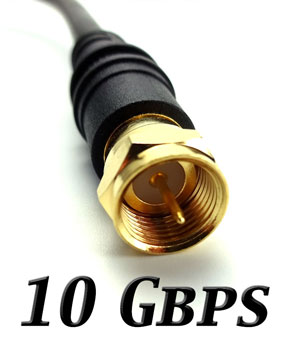By: John Shepler
Fiber optic service is rapidly expanding and is considered the top choice for businesses seeking high-bandwidth internet. However, because installing fiber can be expensive, many businesses choose cable broadband as a practical alternative. The latest cable standard, DOCSIS 4.0, offers comparable speeds to fiber optic service, with download speeds up to 10 Gbps and upload speeds up to 6 Gbps.

What is DOCSIS?
DOCSIS stands for Data Over Cable Service Interface Specification and allows cable TV companies to provide internet service using the same coaxial cables. Developed by CableLabs, a consortium of cable operators, DOCSIS has undergone several upgrades to improve speed and performance.
Since its introduction in 1997, DOCSIS has evolved to keep pace with internet demands. Early versions offered download speeds of 40 Mbps and upload speeds of 10 Mbps. Over time, features like VoIP, QoS, and increased upload speeds were added.
DOCSIS 3.0, released in 2006, offered a significant speed boost with download speeds up to 1 Gbps and upload speeds up to 200 Mbps. It also introduced support for IPv6, making cable a viable alternative to fiber optic service.
Later versions, such as DOCSIS 3.1, increased download speeds to 10 Gbps and upload speeds to 1-2 Gbps. The latest version, DOCSIS 4.0, aims to achieve symmetrical upload and download speeds of 10 Gbps and is currently in the testing and deployment phase.
How Can Copper Cable Run So Fast?
The use of Hybrid Fiber Cable (HFC) technology is the reason for the increased speeds of cable internet. HFC networks use fiber optic cable for the main network infrastructure, similar to fiber optic providers. However, in HFC networks, the fiber terminates in the neighborhood, and the final connection to the building uses coaxial cable.
Access Cable Fiber Networks Directly
Cable companies operate extensive fiber networks to connect their systems and link to the internet backbone. Recognizing the demand for high-speed internet, cable companies now offer businesses direct access to their fiber networks, bypassing the need for coaxial cable.
Direct fiber connections offer advantages such as faster speeds, symmetrical bandwidth, and dedicated connections. Unlike cable broadband, which is a shared service, dedicated connections provide consistent performance without being affected by the internet usage of others in the neighborhood.
Dedicated internet access and point-to-point private lines are often the preferred choice for businesses that rely heavily on cloud-based applications and require consistent speed and low latency. While traditional telco services like T1 lines offer dedicated connections at lower speeds, higher bandwidth options are available through DS3, SONET, Ethernet over Fiber, and MPLS networks.
The best internet service for your business will depend on your specific needs, such as speed, latency, jitter, and congestion tolerance. Cable broadband, particularly with DOCSIS 3.0 and above, provides a reliable and cost-effective option for many businesses. However, businesses with more demanding requirements may need to consider dedicated fiber optic connections to ensure the necessary performance for maximum productivity.
Discover the cable, fiber, and copper broadband options available for your business and compare their features.

